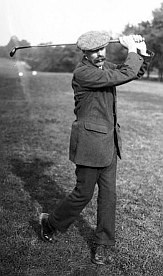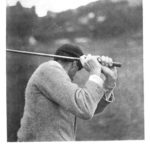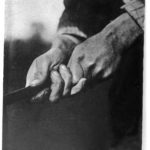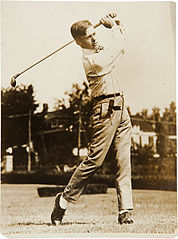A Five-Time Champion Golfer of the Year: Golfer James Braid
James Braid is a member of the Great Triumvirate along with Harry Vardon and John Henry Taylor. Braid was born on February 6, 1870, at Earlsferry, Fife, Scotland and he passed away on November 27, 1950, in London, England. Braid is a member of the World Golf Hall of Fame.
James Braid won the Open Championship (the British Open) five times, although he got a slower start on winning this championship than Vardon and Taylor. By the time Braid won his first Open Championship in 1901, the other two members of the Great Triumvirate had already won three apiece.
Scotsman Braid was a tall and strong man who hit the golf ball considerably longer distances as compared to his fellow competitors. It was his putting that held him back from winning the Open Championship. That changed when he found a putter that seemed to have magic in it for him. With the putter change, Braid’s putts began finding the bottom of the cup. Championship wins soon followed.
After the 1900 Open Championship, James Braid gave up on his wooden-headed putter when he discovered a putter with an aluminum head. This putter felt good to him. His new aluminum-headed putter effectively (Or magically!) made the cup larger for Braid as he gained more confidence in his putting skill. Braid’s putts began to drop more and more consistently and now he became a dominant championship golfer. Rival John Henry Taylor said, and perhaps to his chagrin, after Braid began using the aluminum-headed putter, “I have yet to meet the player who could hole the 10-yard putts with greater regularity.”
Championships came to Braid after he changed his putter. He went on to win the Open Championship in 1901, 1905, 1906, 1908, and 1910. With this record, James Braid was the first golfer to be the Champion Golfer of the Year five times. Later, both Peter Thomson and Tom Watson accomplished the same record of winning the Open Championship five times. Thompson in 1965 and Watson in 1983.
After retiring from competitive professional golf, Braid became a golf course architect. He designed or contributed to the architecture of over 200 golf courses. His Championship course of Carnoustie in Scotland is probably Braid’s masterpiece. Carnoustie continues to challenge golfers in our time. Braid authored, “Advanced Golf, or, Hints and Instruction for Progressive Players” in 1911.
James Braid’s Golf Swing
James Braid Describes the Keys to His Grip
Perhaps your grip will improve by studying and using techniques of James Braid’s grip. Remember, Braid was a long hitter so following his grip tips may help you to increase your distance.
* “The left hand. – The left hand is well over the top of the shaft.”
* “The thumb is against the side of the shaft, not on top.”
* “My grip is very tight with all fingers.”
* “The right hand. – The club lies in the joint of the first finger of this hand.”
* The two first fingers grip the club.”
* “The little finger rides on the top of the first finger of the left hand.”
* “The thumb lies rather over the centre of the shaft.”
* “The left thumb is pressed against the side of the shaft by the right hand.”
Note: See Plate No. II.
* “The whole grip must not be so tight as to stiffen the muscles of the forearms.”
* “The reason for the overlapping of the little finger is to make the grip as one-handed as possible, and it insures both wrists working better together.”
Plate No. I Shows Braid’s grip at the top of his swing.
Plate No. II shows the part of Braid’s right hand that presses on his left thumb.
Plate No. III has Braid’s right hand open somewhat so you can see the position of his left thumb and hand.
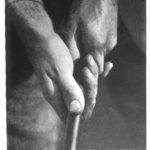
Plate No. III has Braid’s right hand open somewhat so you can see the position of his left thumb and hand.
My Personal Thoughts Regarding James Braid’s Grip
* Braid had his left thumb slightly right of the center of the shaft and his grip was tight in all the fingers. However, his grip was not so tight that it would “stiffen the muscles of the forearms.”
* Braid used the Vardon Overlapping grip. He said the purpose of the little finger of the right hand overlapping the index finger of the left hand was to “make the grip as one-handed as possible.” This is a hallmark of the Vardon Overlapping Grip. A good golf grip unites the hands so they work together as if one.
Source Note:
The quotes and images about James Braid’s grip are from the book: “Great Golfers,” by George Beldam with contributions by Harold H. Hilton, J. H. Taylor, James Braid, Alex Herd, and Harry Vardon. This book was published in 1904 and is now in the Public Domain.
